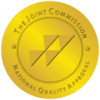Habit Forming Drugs and Addiction Signs


Written By
DreamLife RecoveryAt the start of a new year many people look for tricks to create new habits. Often, this means making exercising a habit, eating healthier foods a habit, or make habits out of other beneficial practices (reading more, using their smartphone less, spending more time with family, etc). However, those brain hacks behind good habit formation are the same mechanisms involved in habit forming patterns in drug abuse.
There are many complex forces at play when our brains form habits—good or bad—and one defining characteristic of these habits is that once they are established, they are notoriously hard to break. Understanding how drug use creates patterns of behavior can help to recognize signs of addiction.
How Drugs Can Create Habit Forming Patterns
When people are recovering from addiction, there is frequently talk of “triggers” and how to deal with or avoid them. This idea that something which reminds recovering addicts of times they used their substance of abuse—a person, place, object, or situation—can undo all the hard work they put into recovery is an important one. Because drug use is a strong habit, physically, psychologically, and emotionally—breaking these patterns of behavior that are part of addiction is incredibly tough.
An article on habit forming published in the Journal of Experimental Psychology in 2012 found that multiple studies revealed how strong habits, like substance use, are influenced by “context cues” or triggers but not current goals. This suggests that a person in recovery who finds themselves in a place or situation in which they used to get drunk or high can be more affected by the inclination to repeat the habit being triggered than by the goal to stay sober.
These context cues or triggers are part of what is known as a habit loop. The habit forming loop involves a trigger (a bad day at work), the routine or behavior (drink alcohol to deal with the stress), and the reward (temporary relief from the stressor). When this pattern of substance use becomes a habit, it can be extremely difficult to change or stop it. If this habit is done frequently enough, it can become the default pattern of behavior so that any time there is stress, the instinct is to use alcohol or drugs for relief.

With substance use, habit forming is even stronger because the neurochemical response to alcohol, opioids, benzodiazepines, cocaine, and other drugs acts on the reward circuit by stimulating the release of feel-good neurotransmitters like dopamine and endorphins that flood the brain and reinforce the desire to repeat this behavior. Over time, these substances rewire the brain’s reward circuit so that only the substance of abuse can produce feelings of pleasure and things that used to do it—kissing your partner, hugging your dog, going on a long run, eating a delicious meal—can no longer produce those feelings. Thus, old habits are replaced by substance use.
A 2017 study featured in thew Journal of Neuroscience found that default patterns of behavior have a greater impact on our decision-making processes than emotion or reason. In other words, when we have to make a choice, we typically do not use our brain’s executive functions like reasoning and analytical thinking, but the embedded patterns of behavior and modes of thought take control. So if a person who has a habit of drinking alcohol when they feel stressed is in a situation where they have a choice to drink alcohol after work or go home, make dinner, take the dog for a walk, and go to bed—their mind will already made up because the default pattern of behavior is in control of the decision. They will go to the bar for a drink.
When it comes to substance use, this habit forming behavior becomes even harder to break once physical dependence develops as well. Physically, if you continue to use alcohol or drugs regularly—even prescription medications like opioid painkillers or benzodiazepines—you develop tolerance, which is when you need a larger dose to feel the same effects. Over time, physical dependence can develop, which is when you experience withdrawal symptoms if you go too long without using alcohol or drugs because your body needs the substance to maintain equilibrium. Combining physical dependence on a substance with the fact that substance use is a default pattern of behavior that you depend on for psychological and emotional soothing—breaking the habit of substance abuse seems like a huge challenge.
And it is a huge challenge, but it is entirely possible with the proper treatment, support, and dedication to replacing substance use habits with healthier ones.
What Patterns Should You Look Out For?
If you are concerned about someone’s substance use habits—or your own—there are some patterns to know about that may be red flags. While many people think it’s necessary for someone to hit rock bottom in addiction before they get help, that is not true. It is far easier to break a substance use habit forming before it becomes addiction.
Patterns of behavior that might be signs to seek help for substance use include:
- Using alcohol/drugs to cope with stress or mental health issues like depression or anxiety
- Justifying the need to use alcohol/drugs more frequently (e.g. “It helps me fall asleep” or “I need it to relax” or “I’m more creative/fun/happy when I’m high/drunk”)
- Continually seeking out places or situations where the substance of abuse may be present
- Experimenting with different drugs
- Going on alcohol or drug binges
- Loss of control over how often/how much substance is consumed
- Losing interest in hobbies, friends, relationships, school, work, etc.
- Seeking out friends or partners who use drugs or alcohol at the same frequency
- Spending increasing amounts of time and money to use alcohol or drugs
- Changes in sleep, appetite, appearance
- Becoming more secretive about substance use
- Becoming more forgetful, neglecting obligations
- Injuries that can’t be explained/recalled
- Mood changes or irritability
- Experiencing withdrawal symptoms
- Trying to quit without success
If you check one or more of the boxes in this list for yourself or a loved one, it’s a good idea to address the problematic behaviors with drugs or alcohol. If you check multiple boxes in the list, it’s definitely a good idea to seek help before problematic behaviors with drugs or alcohol becomes addiction. If you are dealing with addiction, it is time to seek addiction treatment.
Diagnosing and Helping the Issue
Only a doctor or addiction treatment professional can diagnose addiction. However, if you are concerned about yourself or a loved one, ask for help if you are think there is an addiction or an unhealthy drug or alcohol habit developing. It cannot hurt to ask for help!
If alcohol or drug use has become an ingrained habit in your life, you are not alone. Many people depend on substances to deal with stress and to get temporary relief from their problems. Substance use is part of culture and jokes abound about needing alcohol to deal with work/kids/spouses and partners/challenges in life. However, for some, this bad habit of getting drunk or high to deal with daily struggles takes over life entirely and becomes addiction.
Addiction treatment can help you to change these negative patterns of behavior with substance use and replace them with good habits. It requires commitment to get better, professional help and guidance, support from loved ones and friends, and a lot of hard work to reprogram the brain that has been changed by substance use. In the right treatment program, recovery is possible for anyone no matter how hopeless it may seem at the start. Recovery can take many tries before the habit of choosing sobriety becomes the default. If you’re ready to change bad habits to beneficial ones, there’s no better time to start than now.
Sources:
-
- “What Happens in the Brain When Habits Form?” – Medical News Today
- “How Do Habits Guide Behavior? Perceived and Actual Triggers of Habits in Daily Life” – Journal of Experimental Social Psychology Volume 48, Issue 2, March 2012, Pages 492-498
- “Reason’s Enemy Is Not Emotion: Engagement of Cognitive Control Networks Explains Biases in Gain/Loss Framing” – The Journal of Neuroscience, Rosa Li, David V. Smith, John A. Clithero, Vinod Venkatraman, R. McKell Carter and Scott A. Huettel 29 March 2017, 37 (13) 3588-3598
- Drugs, Brains, and Behavior: The Science of Addiction – National Institute on Drug Abuse






